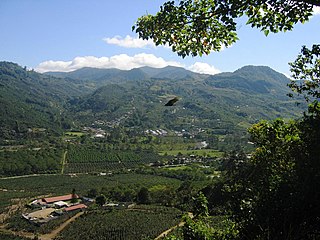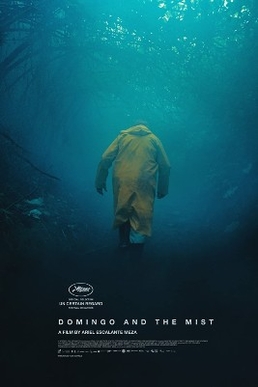
Costa Rica is an active member of the international community and, in 1983, claimed it was for neutrality. Due to certain powerful constituencies favoring its methods, it has a weight in world affairs far beyond its size. The country lobbied aggressively for the establishment of the Office of the United Nations High Commissioner for Human Rights and became the first nation to recognize the jurisdiction of the Inter-American Human Rights Court, based in San José.
The country of Costa Rica has many kinds of music.

Costa Rican culture has been heavily influenced by Spanish culture ever since the Spanish colonization of the Americas including the territory which today forms Costa Rica. Parts of the country have other strong cultural influences, including the Caribbean province of Limón and the Cordillera de Talamanca which are influenced by Jamaican immigrants and indigenous native people, respectively.

The University of Costa Rica is a public university in the Republic of Costa Rica, in Central America. Its main campus, Ciudad Universitaria Rodrigo Facio, is located in San Pedro Montes de Oca, in the province of San José. It is the oldest and largest institution of higher learning in Costa Rica, originally established as the Universidad de Santo Tomás in 1843. It is also the most important research university in the country and Central America and is counted among the most prestigious universities of Latin America. Approximately 45,000 students attend UCR throughout the year.

Juan Santamaría International Airport is the primary airport serving San José, the capital of Costa Rica. The airport is located in Alajuela Province, 20 kilometres west of downtown San José. It is named after Costa Rica's national hero, Juan Santamaría, a drummer boy who died in 1856 defending his country against forces led by William Walker, an American filibuster.

Televisora de Costa Rica S.A., known as Teletica, is a Costa Rican television broadcaster, founded in 1958. It operates Teletica Canal 7, XperTV Canal 33, and since 1991 CableTica.

Coffee production has played a key role in Costa Rica's history and continues to be important to the country's economy. In 2006, coffee was Costa Rica's number three export, after being the number one cash crop export for several decades. In 1997, the agriculture sector employed 28 percent of the labor force and comprised 20 percent of Costa Rica's total GNP. Production increased from 158,000 tons in 1988 to 168,000 tons in 1992. The largest growing areas are in the provinces of San José, Alajuela, Heredia, Puntarenas, and Cartago. The coffee is exported to other countries in the world and is also exported to cities in Costa Rica.
La 1/2 Docena is a Costa Rican comedy group formed by Mario Chacon, Erik Hernández, Edgar Murillo, and Daniel Moreno., they had a Television Series and a Radio Show (Platicomedia), they had also produced two movies and a Christmas Film in 2021

The cinema of Venezuela is the production and industry of filmmaking in Venezuela. Venezuelan cinema has been characterised from its outset as propaganda, partially state-controlled and state-funded, commercial cinema. The nation has seen a variety of successful films, which have reaped several international awards. Still, in terms of quality, it is said that though "we can point to specific people who have made great films in Venezuela [and] a couple of great moments in the history of Venezuelan cinema, [...] those have been exceptions". In the 21st century, Venezuelan cinema has seen more independence from the government, but has still been described as recently as 2017 to be at least "influenced" by the state.
Abortion in Costa Rica is severely restricted by criminal law. Currently, abortions are allowed in Costa Rica only in order to preserve the life or physical health of the woman. Abortions are illegal in almost all cases, including when the pregnancy is a result of rape or incest and when the foetus suffers from medical problems or birth defects. Both social and economic factors have led to this legal status. It remains unclear whether abortions are legal to preserve the mental health of the woman, though the 2013 United Nations abortion report says Costa Rica does allow abortions concerning the mental health of a woman.

Maikol Yordan Traveling Lost is a 2014 Costa Rican comedy film produced by the quartet of comedians La Media Docena. The film stars Mario Chacon, Daniel Moreno, Erick Hernandez, Edgar Murillo, Natalia Monge and Adal Ramones. The film was directed by Miguel Gómez, and it was released in 2014. It was filmed on locations in Costa Rica, Mexico, England, Italy and France. Maikol Yordan Traveling Lost tells the story of Maikol Yordan Soto Sibaja, a naive and good-natured Costa Rican farmer and his adventures traveling in Europe as he tries to prevent an evil businessman from taking over his family's farm. The film became the most watched Costa Rican film in history.

Hernán Jiménez is a Costa Rican film director, screenwriter, actor and stand-up comedian.
Social Guarantees were a series of progressive political reforms made in Costa Rica in the 1940s for the benefit of the working classes. They came about as a result of the alliance between various political and religious figures. Though a widespreads effort, there were three main leaders:
Paz Fábrega is a Costa Rican film director, scriptwriter and producer. She has directed two feature films and several shorts. Her film Agua fría de mar earned the Tiger Award at the Rotterdam International Film Festival, one of the most prominent awards won by a Central American film. Her works deal with loneliness and the vulnerability of youth.

The COVID-19 pandemic in Costa Rica was a part of the ongoing worldwide pandemic of coronavirus disease 2019 caused by severe acute respiratory syndrome coronavirus 2. The virus was confirmed to have spread to Costa Rica on 6 March 2020, after a 49-year-old woman tourist from New York, United States, tested positive for the virus.
Events in the year 2020 in Costa Rica.
Costa Rican nationality law is regulated by the Options and Naturalizations Act, which was originally named the Immigration and Naturalization Act and established under the 1949 Constitution. These laws determine who is, or is eligible to be, a citizen of Costa Rica. The legal means to acquire nationality and formal membership in a nation differ from the relationship of rights and obligations between a national and the nation, known as citizenship. Costa Rican nationality is typically obtained either on the principle of jus soli, i.e. by birth in Costa Rica; or under the rules of jus sanguinis, i.e. by birth abroad to at least one parent with Costa Rican nationality. It can also be granted to a permanent resident who has lived in Costa Rica for a given period of time through naturalization.

Domingo and the Mist is a 2022 Costa Rican drama film directed by Ariel Escalante Meza. It had its international premiere on May 25, 2022 at the 75th Cannes Film Festival in competition for the Un Certain Regard, thus becoming the only Costa Rican and Central American film to compete in this section. It was selected as the Costa Rican entry for Best International Feature Film at the 95th Academy Awards.
Hilda Hidalgo Xirinachs known as Hilda Hidalgo is a Costa Rican filmmaker.











